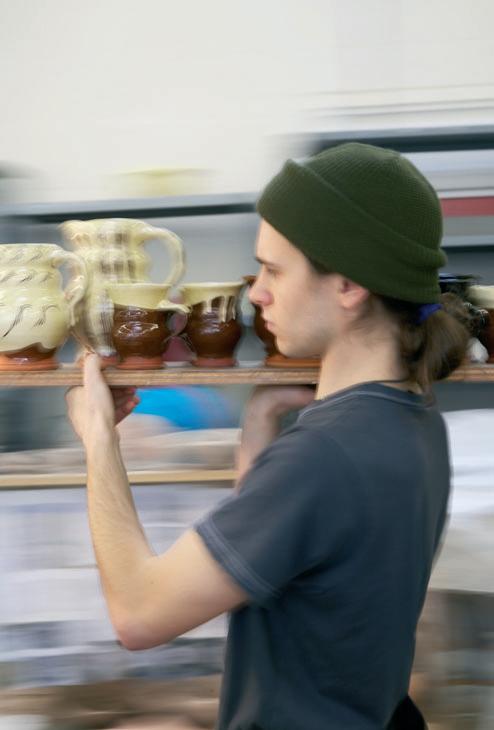
2 minute read
BA (Hons) Fine Art & Writing
CAREER POTENTIAL: This combination of art practice and writing means you are very well placed to choose from a range of career options. These may include: advertising, artist, arts administration, broadcast and digital media production, media research, museum and gallery curation, journalism, publishing, teaching, and writing. The course also prepares you for postgraduate study and doctoral research in the visual arts, art writing, literary theory and other related disciplines.
COURSE CONTENT: This course is for students who want to explore writing in a fine art context, for example, art as text, words as physical forms, or critical writing on art. The course combines the breadth, stimulation and flexibility of the BA Fine Art course with detailed study of art as writing. In the studio, specialist tuition is provided in a range of study areas, including: painting, sculpture, printmaking, and time-based practice. Attention is paid to the ways in which writing might occur in these or other media, and theoretical perspectives are offered on topics such as: metaphor, the relation between word and image, the nature of interpretation, and literary theory.
Advertisement
The balance of theory and practice is approximately 50:50, although you have some flexibility on this through selfdirected study modules. BA (HONS) FINE ART & WRITING* Campus: Howard Gardens Course Length: Three years full-time
* Subject to validation
Year one: A series of inductions is provided in a range of media and practices. You are able to work in several disciplinary areas during the first part of the year, exploring what is possible within the various media, at the end of which you make an initial choice of specialist study. In writing seminars and theory modules, you are introduced to metaphor, art as text, critical writing on art, and the history of the relation between modern art and writing.
Year two: The second year is the time when you begin to develop your chosen area of specialism, although the opportunity to experiment and work across media is also available. Consideration is given to the contemporary nature of your practice, and to the various forms of exhibition or publication through which you might address your audience. These aspects of practice are informed by historical and philosophical theoretical studies.
Year three: This is the period when the artwriting dialogue maintained throughout the course comes into its own. You exercise and extend the skill and understanding you have gained so far both in the studio, through visual-verbal enquiry that is individual, accomplished and often innovative or daring, and in your dissertation, presented as a theoretical debate which informs and illuminates your practice as a contemporary artist-writer.
ASSESSMENT:
Studio work is assessed by exhibition or written assignment, seminar presentation and viva voce examination. Theoretical work is assessed by written assignment, seminar presentation and viva voce examination.
UCAS CODE(S): WV18 (Route A), EV18 (Route B)
ENTRY REQUIREMENTS: 160 UCAS Tariff Points from at least two A levels or equivalent. We have a very open mind to the qualifications you bring with you. We simply look to be convinced that you have the commitment to pursue this degree and the skills to make it worthwhile. We may ask you to bring a portfolio of your work to show us.
FURTHER INFORMATION: csad.uwic.ac.uk/Fine-Art/
Programme Leader: Clive Cazeaux - Ccazeaux@uwic.ac.uk









